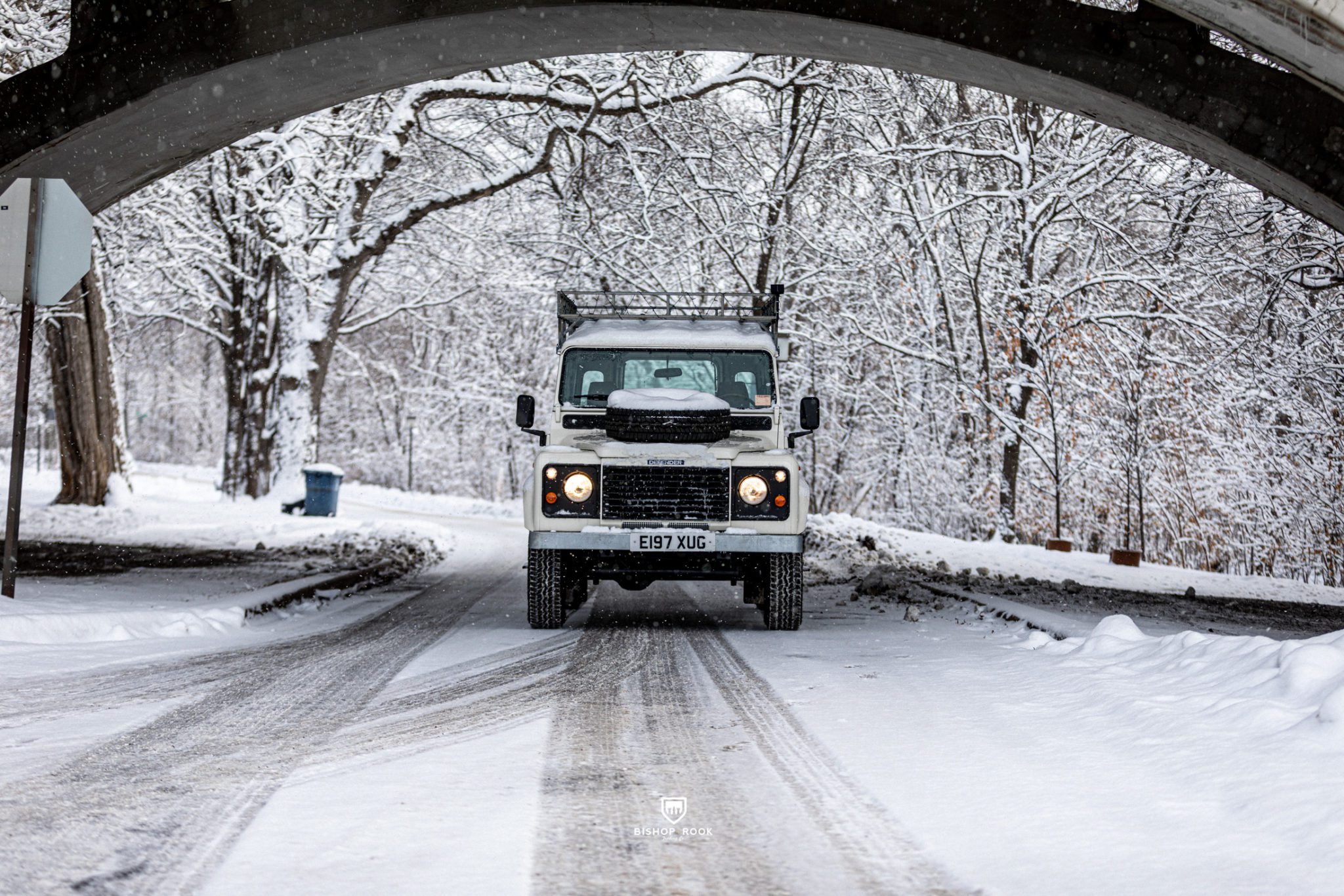This little Landy has a bit of an interesting back story. The biggest part of it is that we acquired her long ago from the Isle of Jersey. That’s part of the story. The bigger part of the story is that we forgot we bought her. Or rather, Mike (company founder) forgot he bought her. We moved her around the Salisbury, England workshop yard for about 6-7 months before he noticed it in the background during a FaceTime call one day.
He said, “Hey, what’s that little Defender 90 in the background?” Andrew’s response, “That’s the one we bought from Jersey a while back, remember?”
Well …. the answer was no. Who forgets they bought a Defender? Apparently, we do.
That’s why we called her “Suha,” which means “forgotten, overlooked” in Arabic. Al-Suha (also called Alcor) is the name of a star in the constellation Ursa Major.

After chatting with the team about the Defender, we decided to take on one of our “Shop Projects.” The kind of project that doesn’t have a timeline, doesn’t have a client, doesn’t really have a build sheet – we just have an idea of what we want to do and slowly make our way through it. It was never designed to be one of our Heritage Nut-And-Bolt Restoration Projects – more of a, “let’s save what we can from the original, use some spare parts from around the shop, and just have fun while we do it.”
If you’re interested in viewing the specs, you can check out the Defender Listing or view the complete Portfolio Gallery.
Stage One: Assessment + Disassembly
When we pull a Defender into the shop for the first time, we put them up on the ramp and do a a team inspection. We look at all the major components to get an idea of where the project will ultimately take us. Does it need chassis work? How’s the bulkhead? How much of the original bodywork is saveable? How does it run and drive?
From there we begin the disassembly process. It’s messy, ugly, and dirty. But it’s also pretty fun. It’s the stage where we get a really good look at the years of use and the many adventures the vehicle has had.
As this vehicle came from the Isle of Jersey – in the Channel Islands off the coast of France – we knew that it was either going to be extremely solid, or a complete nightmare. The dry climates help keep the chassis in good shape, but the salt-air can create chaos for the bodywork. It’s a toss up sometimes what we’re going to find.
Stage Two: Defender Chassis Work
All Defender chassis at 25+ years old will need some work. All of them. There’s no such thing as finding a perfect Defender chassis. Some are better than others. But it’s no different than trying to find an old Ford F150 with a perfect chassis or bodywork. If it’s been driven and enjoyed, it’s going to need a little TLC to bring it back to it’s original glory.
In the case of Suha, there were only a few small spots that we need to take care of to make the chassis solid. While a lot of Defender Traders (and owners) might opt to plate over rust holes, we take the approach of cutting away the bad metal and rot and welding in specific patches. This ensures that the rust is stopped and that the chassis will be protected from future damage. It also looks much better.



Stage Three: Mechanical
Suha ran extremely well and was a fairly nice driving Defender before we took her apart. That doesn’t mean we ignore the mechanical aspects of the refresh. It drives us mad when we see Defenders come into our workshop that have a cheap blow over paint job, a few decals, some new wheels, but the engine is totally worn out.
We do an extensive check of the mechanical components before we start the work – which gives us a good baseline to start with. We check compression, we drive some good miles and check for any smoke, bangs, rattles, clunks, haunting ghost sounds. From there we can evaluate if the engine is a complete rebuild (for our Preservation Series projects) or if we just need to give it a good solid service (timing belt, head gasket, water pump, accessories, etc.).
In the case of Suha, it was a middle ground, mostly because we just wanted to do it right the first time and not have to worry about having to go back in and fix something that was easily repaired while the body and engine were so extremely accessible.



Project Suha Preservation Series – Part II
In the next post, we’ll walk through the paint and body work that’s required of a quality Defender build. We’ll show you what typically lays beneath the years of natural patina and what type of rust can show up in mysterious places.
Stay tuned and/or subscribe to the blog (right side) to get all the updates when we post.






































You must be logged in to post a comment.